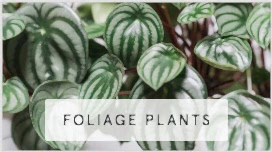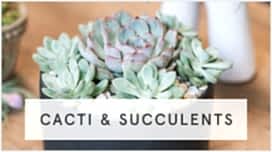How to Properly Care for Plants That Are Difficult to Grow

How to Properly Care for Plants That Are Difficult to Grow
Those who care for occasional house plants or cultivate a busy indoor jungle tend to focus largely on varieties that are easy to maintain. They typically don’t require much attention at all, either because they’re tolerant of low moisture or don’t require much sunlight. At most, they may require some infrequent watering to ensure that they continue to thrive. And, for the most part, that’s exactly what they do. That makes them especially appealing to people who don’t possess a green thumb.
On the opposite end of the spectrum, however, are the plants that pose a challenge. They can be downright difficult to keep alive if you aren’t careful, and it’s important to understand what caring for them entails before you invest in them. That’s for their health and wellbeing, of course, but also for your satisfaction. The quality of your indoor garden will suffer if even one plant shows signs of failure, so keep that in mind as you consider your options. Here are several plants that are difficult to grow — and how to best care for them.
Boston Fern
The lush Boston fern is an unforgettable beauty. It grows abundantly, producing a tropical appearance that can easily transform your indoor garden into a true jungle-like atmosphere. It’s that very attribute that makes the Boston fern such a picky plant. While its specific needs are not terribly challenging, it does require very particular care. The goal should be to replicate a jungle environment in your home.
lighting is also key. Be especially mindful of its needs during wintertime, when indoor air tends to become drier. That can significantly affect tropical-style plants that call for as much moisture as possible. You can generate a more humid space by placing the pot containing the fern on a bed of pebbles placed in a tray full of water. Mist it lightly a couple of times a week, too.
It’s equally important to check on the soil; if it dries out, your Boston fern won’t survive. Check it regularly, and add water as often as needed to ensure that it’s consistently moist. Finally, know the signs of possible Boston fern failure. The leaves will take on a yellowish tinge if the plant is dry. Take that as an immediate sign to boost moisture levels in the room.
Miniature Roses
Sure, they look fabulous, but micro roses can prove decidedly challenging to nurture inside the home. The compact version of the beloved full-size flower is a petite beauty, and it grows in many different colors. Some even emit fragrance, making them especially appealing additions to your indoor garden.
But the issue here is that ultimately, miniature roses perform best outdoors. That doesn’t mean, however, that you can’t incorporate them into your indoor space for a temporary period. During that time, make sure that you give it all of the love and attention that it needs to thrive. Ideally, your roses should receive at least five hours of sunlight daily. This is so important that many miniature roses are packaged in decorative rectangular containers that are perfect for positioning on the windowsill. If you can’t expose it to adequate sunlight each day, then it’s imperative to use grow lights to help support them.
The condition of the soil is also vital. Ideally, it should be consistently damp, but never so soggy that you risk causing root rot. Striking that balance is key to protecting the integrity and vitality of your roses for as long as possible. Humidity levels are key as well, as dryness can severely affect the life expectancy of the already short-lived miniature rose. By elevating humidity levels in your home, you can keep the leaves looking a little bit perkier for longer. Use a pebble-filled tray with shallow water to create a makeshift pool for the roses. Just make sure its roots don’t make contact with the water, or it will lead to quick root rot.
Orchids
You might not really think of orchids as being particularly stubborn, given their popularity. The beloved plant is a favorite for its regal beauty — take in the rapturous elegance of the Purple Phalaenopsis and Succulent as an example — but it does require some extra attention to ensure that it continues to look its best. Those blooms won’t support themselves, and those sleek stems need some TLC!
It’s a tropical plant, which accounts for many of its needs. Remember that your aim should be to replicate that environment as much as possible. In the case of the orchid, you’ll need to provide your plant with plenty of indirect sunlight. Insufficient exposure to light can result in weak, sallow-looking flowers that barely capture attention. By contrast, too much can scorch the leaves. Find that fine balance and stick with it.
Plenty of water will also help your orchid thrive—but again, it’s key to be reasonable about how much you supply your plant. Too much can lead to root rot. To be safe, give the plant some time between watering sessions to dry completely. You can check its status by reaching a finger about an inch inside the soil. Does it feel dry to the touch? That’s a sign that your plant needs some moisture stat. Soak the soil, but don’t overdo it or you’ll risk your orchid plant developing rot. Finally, make sure to prioritize humidity levels. More is best, and you can use a humidifier to facilitate the process if necessary.
Azalea
The azalea is among the most dreamy plants you’ll ever spot. It brims with personality, an explosion of fresh colors that seem to liven up any space in an instant. These beautiful plants are well worth growing inside if your space could benefit from a little upgrade. But, you will need to commit to caring for it regularly to ensure that it maintains its integrity.
The first step is to choose the right type of blooming plant. For indoor growth, opt for a greenhouse azalea instead of a hardy azalea. Inspect the quality of the plant, too. If it’s already ripe with blooms, you should swap it for one with very few open buds and very little visible color. Then you can take advantage of its beautiful flowers and colors for longer.
Take your care cues from the needs of traditional outdoor azaleas, which perform best in cool, shaded spots. Aim to place them in a cooler area to protect the stems and ensure that they last longer. Avoid direct sunlight, but do make sure that they receive adequate light daily. The most important factor of all is moisture exposure. Your azalea will undoubtedly suffer if it becomes dry. Prevent that by dunking the entire plant — including its pot — underwater. Make sure it’s not sopping wet when you place it back where it belongs. Azaleas should never be soaking or soggy — just damp enough to protect them from suffering premature failure.
Croton
As challenging indoor plants go, the humble croton is on the less difficult side of the scale. First, consider just how many types of croton plants are available. The range is wide and varied, but they all share a relative inclination for more care and attention. The good news is that mastering how to maintain them should be more than enough to keep them tough, resilient, and equipped to handle fluctuating conditions.
What’s the best way to care for a plant whose notoriously “fussy” reputation follows it everywhere it goes? Understand that it’s a little bit temperamental, for starters. Sometimes the once stunning croton takes on a decidedly tame and lackluster appearance days after you add it to your indoor garden. That’s normal behavior, especially if you’ve recently moved the plant. To protect it from distress, try to find a suitable location in advance, then leave it right where it is for as long as it’s possible.
Like other tropical varieties, the croton is eager for plenty of moisture. It’s a thirsty plant, but only add new water when the topmost inch of soil feels dry. Then you’re free to add water, waiting for it to flow out of the drainage holes at the base of the container. To facilitate elevated humidity levels in your home, place the croton on a pebble tray filled with water. If you’re looking for one to love, consider the Croton Banana. This lively and unique plant is a fresh ray of sunshine — bright, uplifting, and just right for gracing a tabletop, a windowsill, or any space that could benefit from the addition of a tough, durable, sometimes tricky plant that’s well worth all the attention it receives.
Don’t let the prospect of caring for slightly higher maintenance plants scare you away. It’s often just a matter of learning specific techniques tailored to each one’s unique needs. Once you’ve mastered those, you’ll feel far more confident about including them in your indoor jungle. It’s well worth the hard work and effort in the end.












